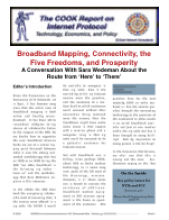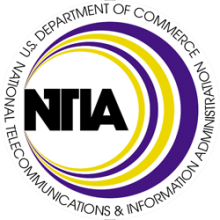Cook Report: Broadband Mapping, Connectivity, the Five Freedoms, and Prosperity
Image

This is an interesting interview that explains why mapping is important and how it should be done to ensure the final product is useful for policy. Unfortunately, much of the broadband mapping in the U.S. has been done by a telco-front group called Connected Nation that produces shoddy, unverifiable maps without making any useful data public.
In this report, Gordon Cook interviews Sara Wedeman, a mapping expert who also works in behavioral economics. Cook describes the interview here, on his blog. The discussion ventures beyond mapping, offering keen insights into why universal broadband availability is so important.
A short excerpt:
COOK Report: In other words, if a Telco says, “we provide access there” what do the people say about it? Do they have service? Is it available? Can they afford to buy it? Can they use it, and do they use it? Wedeman: That’s why the definition of “under-served” is so important, because a lot of people have construed this to be unique to rural areas. It is clear that in many of these rural locations there is literally nothing. However, what is not so obvious to many is that lots of people in urban areas don’t even have phones, let alone high-speed Internet connections. They may use a pay phone, or a cell phone. Before the mass adoption of cell phones, the only service they had was provided by pay phones.



